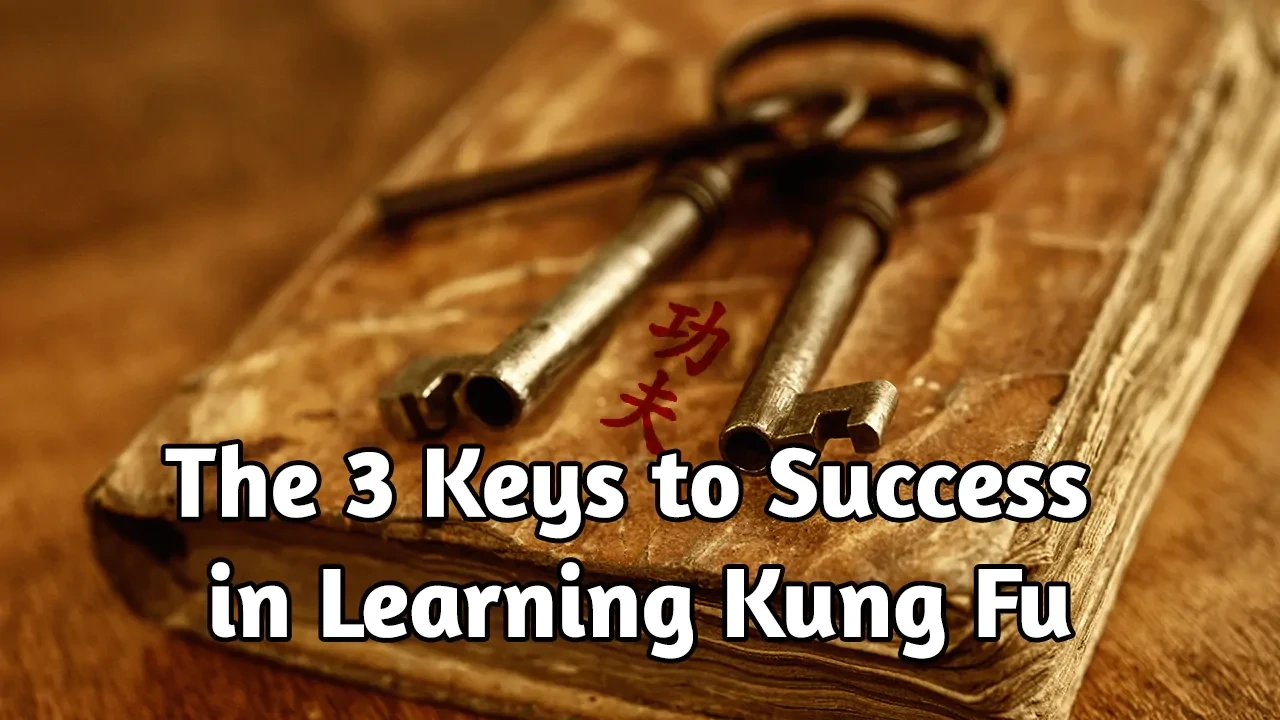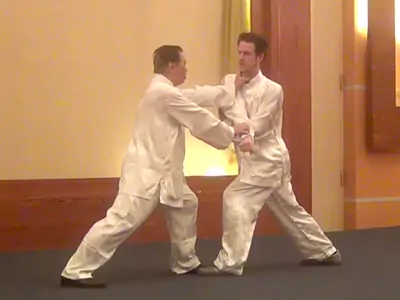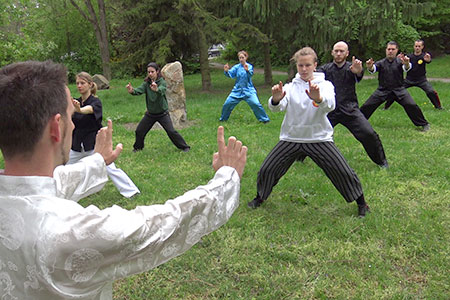
Did you know that there are three factors that decide how far you can get when learning Kung Fu, Qi Gong or any other art?
It’s good to know about them, as each of them has great impact on your progress, limiting or boosting it.
The Method
If you learn a superficial, purely external style, the benefits you can gain will mostly be on a physical level, manifesting in muscular strength, increased flexibility and graceful movement. Provided you don’t injure yourself. Same goes for Qi Gong that is limited to gentle physical exercise instead of energy practice.
If combat application is not taught in a Kung Fu system, you’ll never learn how to use the techniques correctly to defend yourself, no matter how long you practice. This is actually the norm in the Kung Fu scene nowadays (which means that there are exceptions). If Kung Fu practitioners fight, they use techniques from outside their style and mimic kickboxing. So if you follow this popular way, you’ll either not learn how to fight at all or how to fight another way than by using genuine Kung Fu.
If meditation and energetic training are not taught at a school, you won’t learn those characteristic aspects of a traditional martial art. To develop your soul, you’ll need other spiritual practices additionally.
When crucial criteria of holistic Kung Fu training are absent, you won’t develop to a high level, no matter how well established or official the lineage may seem.

Effective traditional Kung Fu application is a rare find.
But if you find a genuine, comprehensive system, you’ll have the rare chance to develop internal force and combat efficiency, the twin pillars of traditional Kung Fu, whilst promoting your health and developing a clear mind.
The Teacher
The teacher is there to pass on the method.
The following is a good categorization, based on a text by our grandmaster, Wong Kiew Kit.
- A bad teacher doesn’t know what they’ll teach next, conducts their classes haphazardly and sometimes even brings harm and confusion.
- A mediocre teacher just teaches according to a syllabus, often without knowing whether their students can follow.
- A good teacher brings benefits the art is meant to give. They make difficult things easy to understand instead of making simple things complicated.
- A great teacher inspires by example and brings out the best in their students, not just in the art but in their daily life. They know what to teach and what not to teach (yet).

In Shaolin Wahnam, we strive to be great teachers who always have their students’ benefit and development in mind.
A master or teacher should at least be a few levels above the student, whilst striving for the student to become better than themselves.
A master should be good in the art and good at teaching. These are two separate skills.
They should have experience and a solid understanding, able to answer questions clearly.
A good way to assess a teacher is to see if they have reached the benefits of the art themselves. They should be a shining example.
You wouldn’t learn from a swimming trainer if they’re not able to swim. Why learn from a Qi Gong teacher who’s weak and sick or from a Kung Fu instructor not able to use their Kung Fu?
They may not be eager to fight and might lose against a better fighter, but they should know how to apply the techniques and be able to come out of combat with an average layman unhurt.
The Student
No matter how good the teacher is, they can only show you the door. You must enter and walk the path yourself.
A master defines a “good student” not by their skill alone. A good student is able and willing to follow instructions.

If you don’t follow the instructions or don’t practice consistently, you won’t excel in the chosen art.
If you find a rare high-level method and an outstanding master willing to teach you, do what he or she tells you. It’s as simple as that.
Just follow the instructions to the best of your ability.
That may sound like blind obedience for some, but actually it is a wise thing to do, as long as you benefit from the training.
When you have chosen a master (and they chose you), you should have some primary trust.
A master
- walked the path that you only just entered, including its ups and downs.
- knows what is necessary at certain stages.
- can prevent you from making silly mistakes and knows what pitfalls to avoid.
So don’t try to be smarter than the master!
Here are a few more “don’ts” coming up:
Don’t add any exercises you think necessary although your master didn’t tell you to do so, just because you read about it elsewhere.
(Hint: They might be detrimental to your training or even dangerous, because you’re not ready for it yet.)
Don’t leave out any training methods whose reasons you don’t understand yet.
(There’s surely a purpose for them and, with practice, the positive effects will unfold by themselves.)
Don’t change the method or exercises.
(If the art is genuine, it has gone through an evolutionary process that you just can’t comprehend.)
And one more recommendation, as some people confuse this:
Do what the master tells you, not what the master does themselves.
(The master practices on their level, you practice on yours.)
So don’t do what the master doesn’t tell you.
Sounds quite restrictive, huh?
Actually not, if you have faith in the teacher and the method. You just follow the path that has been laid out for you, not because of suppression but compassion.
Here’s a quote from one of my students (who became a good student after some trials and errors):
… every time I disregarded his advice and instructions for whatever reasons, I came to the same conclusion again: “Oh, he was right after all!”
As a smart student you should, of course, assess the effects of your practice from time to time.
Do you get the benefits the art is supposed to give after training for a reasonable amount of time?
If yes, continue as instructed and assess again later.
If not, consult your master and ask for advice. If this still doesn’t bring you further after some time, it might be time to search for something else.
Also, if you notice that the whole method lacks important parts or is debased, you reached the point where you shouldn’t waste any more time on it. This may hurt initially, but staying because of sense of duty, habit or convenience will not bring you closer to mastery. Make sure to thank your teacher and leave on good terms. Always keep respecting them, even if you surpass them one day.
Needless to say that if malicious behaviour is conducted or condoned there, it’s time to run.
If you have three golden keys, you open the doors to mastery.
Put in the effort to find a genuine method and a great teacher to advise you.
It may not be an easy endeavour but your time and effort will be handsomely rewarded by the possibilities and benefits you gain from the training.
Then practice as you’ve been taught.
Whenever possible, learning from a great master in person certainly is the best option.
But “can you learn Kung Fu Online?”. Find out more on that topic in the linked article!
What experience have you had with Kung Fu methods, teachers and yourself as a student? Share it in the comments below!
Stay connected with our Newsletter!
Join our mailing list to receive the latest news and updates.
Don't worry, your information will not be shared.
You can cancel your newsletter subscription at any time by clicking the unsubscribe link at the bottom of every newsletter.
We will never sell your information, for any reason. For further details, please see our Privacy Policy.


